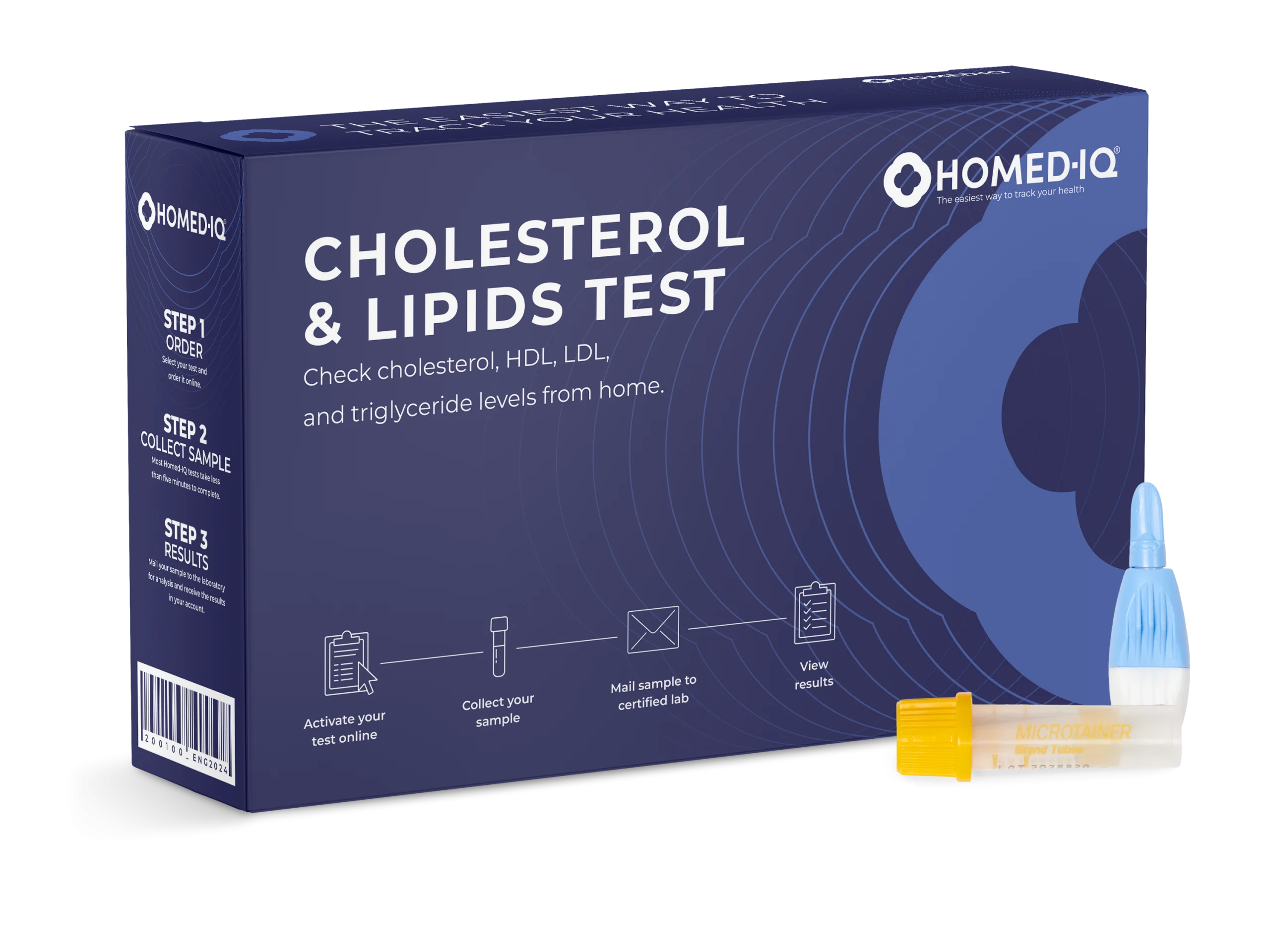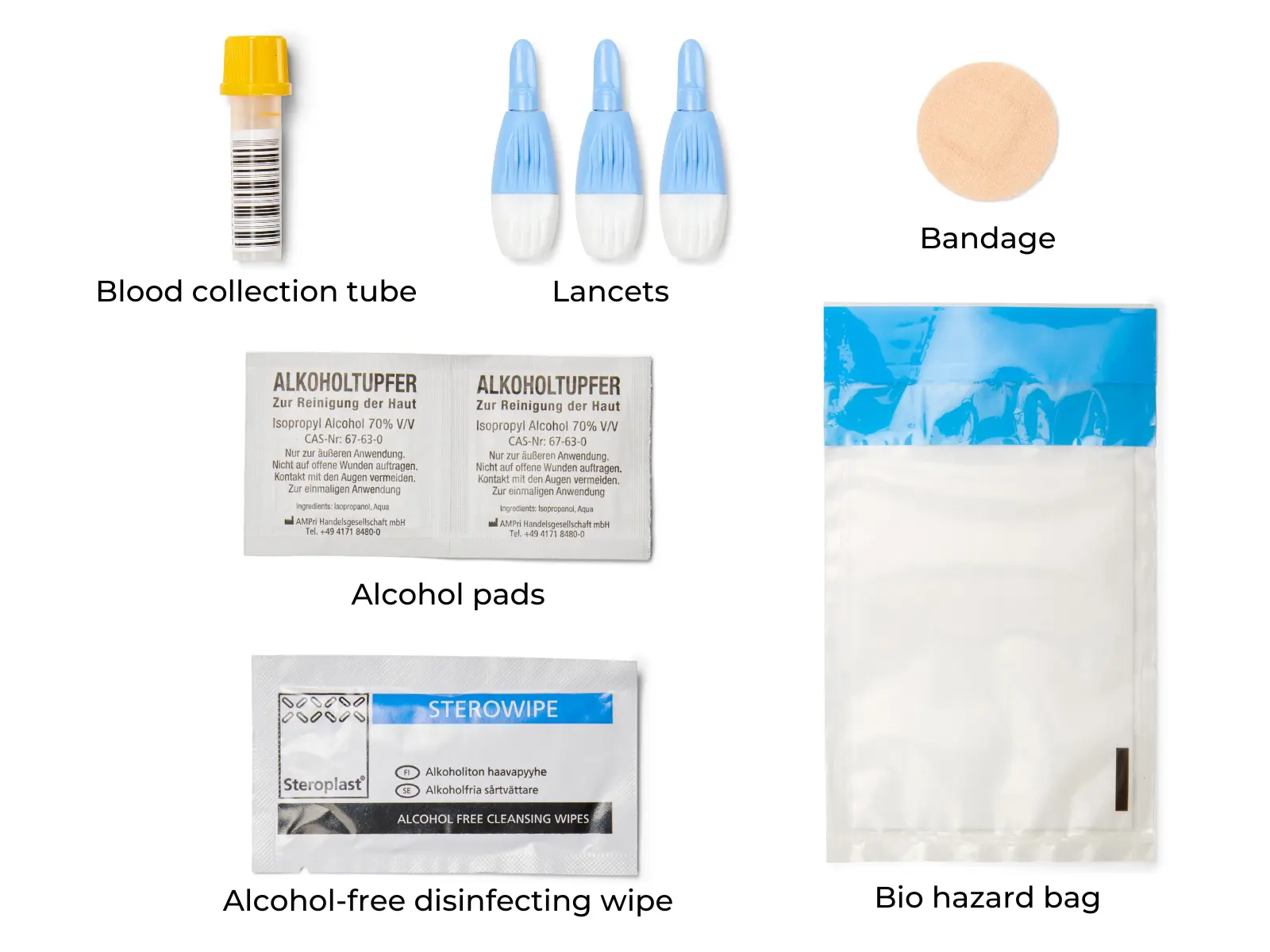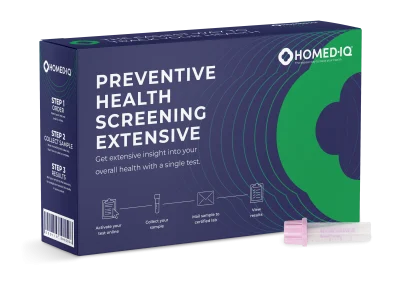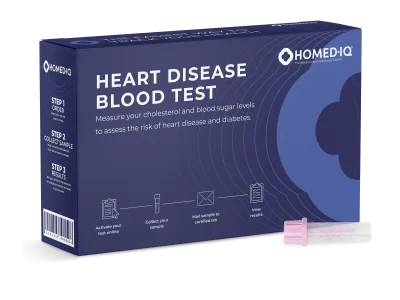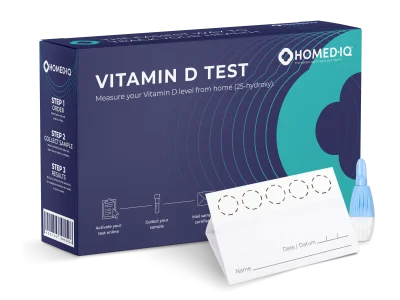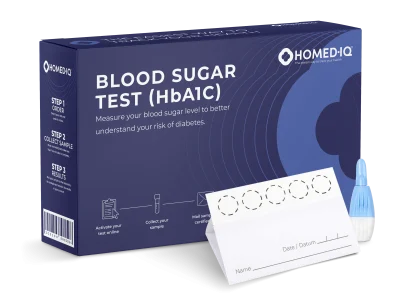

Cholesterol & Lipids Test
€39,00
Free Shipping to
Almost 25% of the world’s population has high cholesterol. This test allows you to assess your cardiovascular health by measuring the amount of cholesterol and triglycerides in your blood. Check your current cholesterol levels or monitor them over time with easy-to-understand results for three markers of cholesterol (total cholesterol, HDL, LDL) and triglycerides.
Test method: Finger prick test
What do we test for?
About Cholesterol
Cholesterol is produced in the liver and is found in every cell of the body. There are two types of cholesterol: one in the form of HDL (high-density cholesterol) and LDL (low-density cholesterol). HDL is also referred to as the ‘good’ cholesterol and LDL is known as the ‘bad’ cholesterol. An elevated cholesterol level is defined as total cholesterol above 6.5 mmol / l.
About HDL
HDL stands for High-Density Lipoprotein, which is a type of lipoprotein found in the blood. It is often referred to as "good cholesterol" because it helps remove other types of cholesterol from the bloodstream. This helps to prevent the buildup of excess cholesterol in the arteries, reducing the risk of atherosclerosis (hardening and narrowing of the arteries) and cardiovascular diseases. Having higher levels of HDL in the blood is generally considered beneficial for heart health, as it helps to counteract the negative effects of LDL (Low-Density Lipoprotein) cholesterol, often referred to as "bad cholesterol." Regular exercise, a healthy diet, and not smoking can help increase HDL levels.
About HDL% of total cholesterol
HDL% of total cholesterol refers to the percentage of High-Density Lipoprotein (HDL) cholesterol in relation to the total cholesterol present in the blood. Cholesterol is carried in the bloodstream by different types of lipoproteins, including HDL and Low-Density Lipoprotein (LDL). HDL is considered "good cholesterol" because it helps remove excess cholesterol from the arteries and transports it back to the liver for processing and elimination. A higher HDL% of total cholesterol indicates a relatively higher proportion of protective HDL cholesterol in the blood compared to total cholesterol. This is generally considered beneficial for heart health, as it helps counteract the negative effects of LDL cholesterol, often referred to as "bad cholesterol." A higher HDL% is associated with a lower risk of cardiovascular diseases, such as heart attacks and strokes.
About LDL
LDL stands for Low-Density Lipoprotein and is often referred to as "bad cholesterol" because elevated levels of LDL can lead to the buildup of cholesterol in the arteries. When there is excess LDL in the bloodstream, it can deposit cholesterol on the arterial walls, forming plaques. Over time, this can narrow and block the arteries, a condition known as atherosclerosis, which increases the risk of cardiovascular diseases like heart attacks and strokes. High LDL levels are often associated with an unhealthy diet, lack of exercise, smoking, and other factors related to an unhealthy lifestyle. Lowering LDL cholesterol through lifestyle changes, medications, or a combination of both can help reduce the risk of cardiovascular diseases and improve overall heart health.
About Triglycerides
Triglycerides are a type of fat found in the blood. They are the most common form of fat in the human body and serve as a source of energy for various bodily functions. When you eat, your body converts the calories it doesn't need into triglycerides, which are then stored in fat cells. Between meals, hormones release triglycerides for energy, ensuring a continuous supply of fuel for various metabolic processes. While triglycerides are essential for normal body function, elevated levels can pose health risks. Elevated triglycerides, along with high LDL cholesterol and low HDL cholesterol, are considered risk factors for cardiovascular diseases. Lifestyle changes, including adopting a healthy diet, regular exercise, and weight management, can help maintain triglyceride levels within a healthy range and reduce the risk of cardiovascular problems.
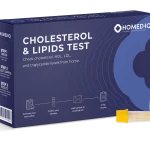
€39,00
Free Shipping to

What is a Cholesterol Test?
This test measures the total cholesterol, LDL, HDL and Triglyceride levels in your blood. The test is a fingerprick test that you can easily take from home. Your sample will then be examined by a certified laboratory and you will receive the results within a matter of days. It couldn’t be easier! Buy a cholesterol selftest today and get immediate insight into your health.
What does a cholesterol test measure?
A cholesterol test checks how much cholesterol is circulating in your blood. High cholesterol can increase your risk of heart disease. By checking your cholesterol level, you can make lifestyle changes or take medication to lower it.
What’s in the test kit?
The test kit contains instructions for use, lancets to collect a small blood sample, a blood collection tube, alcohol wipes, band-aids, a protective transport bag and a return envelope to send your sample to a certified laboratory.
How does a cholesterol test work?
This test requires a blood sample from a finger prick. The test kit contains all materials and instructions to take the blood sample from home. After activating the test and taking the sample, package and mail the test to the laboratory with the prepaid shipping label. The laboratory will analyse your sample and the results will be sent to your Homed-IQ account.
Common symptoms:
High cholesterol in itself does not produce any noticeable symptoms. This is why it is often discovered by chance through other bloodwork.
While high cholesterol itself does not cause symptoms, long-term high cholesterol can lead to symptoms of heart disease, stroke, or atherosclerosis in other blood vessels. These symptoms include left-sided chest pain, pressure, or fullness; dizziness; slurred speech; or pain in the lower legs.
Cholesterol
Cholesterol is produced in the liver and is found in every cell of the body. There are two types of cholesterol: one in the form of HDL (high-density cholesterol) and LDL (low-density cholesterol). HDL and LDL are also known as “good and bad” cholesterol. HDL is also referred to as the ‘good’ cholesterol and LDL is known as the ‘bad’ cholesterol.
HDL
High-Density Lipoprotein (HDL) is a type of lipoprotein found in the blood. It is often referred to as “good cholesterol” because it helps remove other types of cholesterol from the bloodstream. This helps to prevent the buildup of excess cholesterol in the arteries, reducing the risk of atherosclerosis (hardening and narrowing of the arteries) and cardiovascular diseases.
Having higher levels of HDL in the blood is generally considered beneficial for heart health, as it helps to counteract the negative effects of LDL (Low-Density Lipoprotein) cholesterol, often referred to as “bad cholesterol.” Regular exercise, a healthy diet, and not smoking can help increase HDL levels. To learn more about HDL, and which levels of HDL are considered normal/healthy, we recommend you to check out our article “What is HDL?”.
LDL
Low-Density Lipoprotein (LDL) is often referred to as “bad cholesterol” because elevated levels of LDL can lead to the buildup of cholesterol in the arteries. When there is excess LDL in the bloodstream, it can deposit cholesterol on the arterial walls, forming plaques. Over time, this can narrow and block the arteries, a condition known as atherosclerosis, which increases the risk of cardiovascular diseases like heart attacks and strokes.
High LDL levels are often associated with an unhealthy diet, lack of exercise, smoking, and other factors related to an unhealthy lifestyle. Lowering LDL cholesterol through lifestyle changes, medications, or a combination of both can help reduce the risk of cardiovascular diseases and improve overall heart health.
HDL% of total cholesterol
HDL% of total cholesterol refers to the percentage of High-Density Lipoprotein (HDL) cholesterol in relation to the total cholesterol present in the blood. Cholesterol is carried in the bloodstream by different types of lipoproteins, including HDL and Low-Density Lipoprotein (LDL). HDL is considered “good cholesterol” because it helps remove excess cholesterol from the arteries and transports it back to the liver for processing and elimination. A higher HDL% of total cholesterol indicates a relatively higher proportion of protective HDL cholesterol in the blood compared to total cholesterol. This is generally considered beneficial for heart health, as it helps counteract the negative effects of LDL cholesterol, often referred to as “bad cholesterol.” A higher HDL% is associated with a lower risk of cardiovascular diseases, such as heart attacks and strokes.
Triglycerides
Triglycerides are a type of fat found in the blood. They are the most common form of fat in the human body and serve as a source of energy for various bodily functions. When you eat, your body converts the calories it doesn’t need into triglycerides, which are then stored in fat cells. Between meals, hormones release triglycerides for energy, ensuring a continuous supply of fuel for various metabolic processes.
While triglycerides are essential for normal body function, elevated levels can pose health risks. Elevated triglycerides, along with high LDL cholesterol and low HDL cholesterol, are considered risk factors for cardiovascular diseases. Lifestyle changes, including adopting a healthy diet, regular exercise, and weight management, can help maintain triglyceride levels within a healthy range and reduce the risk of cardiovascular problems.
How to prevent high cholesterol
There are certain ways to prevent high cholesterol. These include but are not limited to:
- A healthy and varied diet.
- Limiting products that contain saturated fats.
- Eating as little salt as possible.
- Limiting your alcohol consumption to a maximum of one glass per day.
- Stopping smoking.
- Making sure you exercise regularly
How high should cholesterol be in men/women?
In men and women, total cholesterol should be less than 6.50 mmol/l. HDL should be greater than 0.91 mmol/l in men and greater than 1.17 mmol/l in women. LDL should be less than 3.37 mmol/l and triglycerides should be less than 2.28 mmol/l in men and women.
Frequently asked questions
What causes high cholesterol?
What is cholesterol?
- Estrogen
- Cortisol
- Vitamin D
Why is it wise to test your cholesterol levels?
Who should use this cholesterol test?
- People who smoke
- People with high blood pressure
- People with type 2 diabetes
- Older adults
- People who are obese
- People with a family history of heart attacks or strokes
